Criminal Chemistry: What's Your Poison?
This week - from adrenaline to arsenic, The Naked Scientists delve into the sinister science of poisons! Plus, what space tech's on the horizon in 2018, and the science of New Year's resolutions...
In this episode
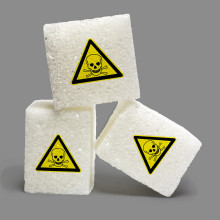
00:46 - Is sugar behind the rise of a superbug?
Is sugar behind the rise of a superbug?
with Professor Robert Britton, Baylor College Medicine
Clostridium difficile is a bacterium commonly causing problems in hospital wards. It leads to diarrhoea and is now responsible for thousands of deaths each year. But it's only since the year 2000 that one strain, or ribotype, in particular has been spreading faster and becoming more dangerous. Antibiotic resistance is part of the problem, but now a new study has revealed that our diets may also be to blame. Georgia Mills heard from study author Robert Britton, professor of microbiology at Baylor College of Medicine...
Robert - We wanted to understand why they’re doing better in the environment so one of the things we tested was whether or not there were certains sugars or other types of carbon sources that ribotype 027 strains liked better than other C. difficile strains and we stumbled upon this disaccharide of glucose called trehalose. While we were testing this we found that ribotype 027 strains do much better on trehalose. But what was more surprising is we found a second ribotype - ribotype 078 - that could also eat low concentrations of this sugar and this ribotype is also an epidemic and hyper-virulent rybotype of C. diff. It was very striking that these two very unrelated ribotypes had both acquired this ability and both started causing major epidemics around the early 2000s.
Georgia - Do we know why that timing is important - why the early 2000s?
Robert - We investigated the mechanism for how trehalose was able to be eaten at lower concentrations in both these strains and they were completely independent. So what was the key driver of why these emerged in the early 2000s? What we think has happened is trehalose is a sugar which the food industry for a long time has wanted to use as a dietary additive but, unfortunately, it was very expensive to produce, and it cost 700 dollars a kilogram prior to the year 1995. A low cost production method was invented in that year that drove the price down to 2 to 3 dollars per kilogram, and that made it very attractive for the food industry to use. It was approved for use in the United States by the FDA in 2000 and in Europe in 2001. We think that’s the key link.
Georgia - Okay. So we’ve this evidence that these two very dangerous strains have both separately got this ability to break down this sugar, and it’s also the timing of the sugar becoming available in Europe and America coincides with when these started to become dangerous. But do we know for sure it is this sugar that’s causing it or could it be something else and it’s just a coincidence?
Robert - It is an association and there’s no way of going back and for sure proving this. We think that the tipping point for these two strains was really the addition trehalose. And the fact that we do see increased disease severity in our mouse model which is associated with what we see in humans is also a striking coincidence. We hypothesised that this is the case and we hope that this stimulates future clinical research to see if limiting trehalose in patients that have these types of c-diff in their intestines will improve their outcome.
Georgia - That was going to be my next question: where is trehalose found?
Robert - Trehalose is a sugar that’s found in many different products. Unfortunately, we don’t know exactly which because that level of description on our labels isn’t always there. But if you look at the generally regarded as safe report by the FDA, what we find is that it’s basically anywhere that you would put regular table sugar sucrose. You see it in standard things you’d imagine like ice cream and cakes and other candies, but you also find it in ground beef, pastas, bread, sushi. Things that you may not really think that there’s a lot of sugar in but, in fact, it is added. It’s hard to know exactly how much and where it is, but it clearly has inundated the market since it was approved.
Georgia - So not very easy or practical to cut it out of our diets then? What about in hospitals: is there anything practical we can take forward from this?
Robert - I think at this stage the research certainly suggests that we should do more research to see if limiting trehalose in hospitals will help drive the emergence of some of the ribotype 027 and 078 hyper virulent strains. And if we can also impact the health of patients that have this by altering their diet and not providing the sugars that make this disease more severe. I’m hoping that that’s where future research will go in the clinic...

05:27 - The space race in 2018
The space race in 2018
with Peter Cowley, angel investor
Getting things into space - be it satellites or people - is a challenging feat, and SpaceX plan to launch their newest rocket, Falcoln Heavy, this year. Izzie Clarke found out if there is money to be made in space from angel investor Peter Cowley...
Peter - Yes, because there’s actually money to be made and it’s been done for many years. In the 50s it was definitely governments doing it and then the military got involved. GPS, that can only be done from space - we all use GPS in our satnavs. Telecoms, telephone calls, TV, a lots of that’s from satellites. But new things like imagery, crops, deforestation, mining, etc.
To give you an idea there are 8,000 manmade objects up there bigger than about 10 cms across of which about 1700 are actually in use. And of those, just using the USA figures, 60% are actually commercial, the other 40% are military and government.
Izzie - SpaceX have said that this year their latest rocket, Falcon Heavy, is going off into space so tell us about it. What is it and how does it work?
Peter - First of all, SpaceX is one of several companies that a guy called Elon Musk, who’s quite well known certainly in the tech industries, has built including Tesla Motors, which you might have heard of and Solar City. He employs about 70,000 people in total of which 7,000 work for SpaceX which is sort of heading towards being profitable because it launches satellites for people.
Now the Falcon Heavy is obviously his heaviest one, his biggest one. It’s got 27 engines and it’s got the thrust of the equivalent of 18 jumbo jets. All the three rockets - it has three rockets - are reusable, which actually makes it cheaper because they come back down to Earth, land and can be reused. It will take 64 tons into low Earth orbit, which is actually quite a lot smaller than Saturn 5. Some of the listeners might remember the Saturn 5 that launched the moon trips in the late 60s and 70s, which actually carried 140 tons.
The aim of this, apart from taking stuff up into orbit, is to get to the Moon with humans and then, potentially, to Mars. First launch was supposed to be 2013. It was supposed to happen this weekend but it hasn’t happened . He’s actually going to launch his own very first Tesla car there and it’s being sent on a trip to Mars this thing, so it won’t come back again. He’s expecting to charge about 90 million pounds per launch so, therefore, there is actually a commercial model.
Izzie - My goodness! Is there much competition out there for launching things into space?
Peter - Yeah. Originally, as I said, it was governments, then it was the European Space Agency. Nowadays I’ve found over 50 companies that will put something into space for you. A whole new industry that’s called New Space which includes things like nanosats, which are tiny 10 cm by 10cm by 10cm cubes which schools send up. There’s energy harvesting, there’s even fuel services.
Izzie - What are those nanosats used for?
Peter - They’re used for experimentation so this is going back to research, but research of all kinds of things in weightless conditions or outside the atmosphere.
Izzie - But take it to the extreme, what about me? Is there a chance that I could spend a holiday in space?
Peter - There is and I’ll give you some figures. I don’t know whether it would be a holiday or not, but SpaceX have got two people who paid a deposit to go up to space later this year, whether that happens or not. The sort of pricing that seems to be on the internet is probably between a quarter and a half a billion dollars for each trip round the Moon.
If you take the average, apparently according the Mumsnet, you pay 10% of your annual wages on holidays. That means you’ve got to be earning between about a billion and 2 billion which, apparently, there are 20 or 30 people in the world that do that. If you go out of capital because remember it’s a holiday of a lifetime, then there are actually several thousand people that could afford 100 million plus. I doubt that includes anybody here in the studio. It certainly doesn’t include me.
Izzie - I’d better start saving then. But why are companies investing in space when, arguably, we could look at other opportunities for improving infrastructure here on Earth?
Peter - Yeah, that’s been a question for many many years. And NASA’s been pushed back a lot of times over the years about the expenditure. It’s just general human nature the fact that people want to explore. Not particularly conquer but want to understand new things about life.
There’s also a lot of other things. We’ve had people in the studio talking about terraforming. This is the concept of converting other planets for normal life so, if we really do break this planet, which is still a good possibility we will, maybe we have to move some of the population away from Earth. Maybe we’re too many people for this Earth to support. And there’s a whole stack of other things like asteroid and Moon mining for materials. There’s scientific research itself. Somethings can only be done from space as I mentioned earlier, the schools.
Then there’s a lot of things been generated from the space programme: integrated circuits, a long time before you were born. The space programme did that. Freeze dried food, that actually came out of that. Metal coated plastics, there’s a whole stack of things that come out of that.
But in the end, philosophically I couldn’t say definitely we should spend it on health as opposed to space or vice versa.
Izzie - Fair enough. And finally, would you want to spend a holiday in space if you could?
Peter - Well, a) I can’t afford it; b) I can’t justify it, and c) there’s quite a lot of interesting places to see on this Earth.
Georgia - How much of a carbon footprint is involved in all of these missions going up? Is it equivalent to planes going around; is it the same kind of ballpark?
Peter - Yeah, it will be. If you take the thrust of 27 jumbos then you’re going to be generating that much carbon from that, exactly. If you do that per person, if you take 17 jumbos which maybe 500 people, that’s 8½ thousand people travelling for a period of time. You’ve got two people going up there, clearly there’s no comparison there, clearly it’s a lot more. There has to be other reasons for doing that.
It will be a long time before we can use a non-carbon based fuel to get up there. There is the talk of electric aircraft and that may well happen if that electricity had been generated by another source other than carbon - nuclear whatever or wind. Then that would not generate the carbon in the motion but you’ve still got the manufacture. Cradle to grave carbon production needs to include actual manufacture and disposal as well.
Georgia - Finally, you mentioned that there was a launch planned recently and it didn’t happen. How much of these companies is a bit of grandstanding, how much of it do you think we’ll actually see?
Peter - I’m confident it'll happen. I’m confident they’re far enough through with this. Remember I’m involved in startups, I have been for a very long time and people promise things and they fail but, in the end, most of them will get there if they’ve got enough money to do so. SpaceX has been around for quite a long time. Last year it was supposed to have launched 14 or 15 satellites into space in 2017, so therefore it can do it and it can achieve it. But this is a big, big rocket and there’s an awful lot of design work necessary. I’m confident it will happen. It’s already a few years late, whether it will be another few years, who knows.

13:13 - Smashing research teaches machines to listen
Smashing research teaches machines to listen
with Chris Mitchell, Audio Analytic
How do you teach a machine to listen, and why would you want to do so? Georgia Mills broke the ice, or in this case glass, with Chris Mitchell from the Cambridgeshire-based company Audio Analytic...
Chris - Audio Analytic does a completely new type of sound signal processing. We call it audio artificial intelligence and it looks at giving computers the ability to respond to sounds such a baby crying, or glass breaking as opposed to speech or music type signals. One of the shortest descriptions I’ve seen of what we do we’re like the Shazam for real world sounds which, I think, is a reasonably short way of describing what we do. It’s technically highly inaccurate but it’s very short.
Georgia - How are you teaching a machine to tell apart sounds?
Chris - First of all you need to get the sounds. One of the fundamental problems we have is what’s referred to as a zero data problem, which means there is no data to train a machine off. However clever AI is, it’s not clever at all if you don’t have data to train off in the first place so we had to go out and collect the data. That means literally smashing, crashing, and bashing, and beeping our way through all of the sounds that you can possibly imagine. Once we’ve collected all the data you’ve then got to go through and label it.
Then you move onto the more AI side of it, which is then trying to model these sounds and the combination and ordering in which they occur. Now that is very different in itself from speech in the fact that there’s no language associated with sounds, so you and I having this conversation is governed by a relatively formal communication structure we both understand. We know the rules of it, around it and that means that at a sound analysis level you can guess which sounds are going to come where based on those rules. My dog doesn’t really have a sense of those rules in any meaningful sense so that doesn’t apply. A lot of that language technology and other aspects that you would approach from the speech side just simply don’t translate and, hence, you have to build a whole new set of AI to be able to accurately detect and respond to those sounds as they occur.
Georgia - So the process, vastly simplified, involves breaking the sounds down into tiny components and getting artificial intelligence to learn which components come from which sounds, and in what context. But I was most interested in the side of data collection, especially the sounds of smashing windows. Now a lot of this happened in a soundproof portakabin in Cambridge where I was shown their glass breaking rig…
Moray - My names Moray Grieve. I’m the data and QA manager of Audio Analytic.
Georgia - So I can see a sledge hammer in the back there - it looks very exciting. So I’m going to smash this window?
Moray - You’re going to smash it - correct. What we’ll do is we’ll get you kitted up in safety equipment. You’ll be behind the glass break rig so you will be as if you were a burglar breaking into the room. It may take you several attempts. It’s actually a lot harder than a lot of people think. A lot of people think you can just tap the sledge hammer to the glass and it will break but, in reality, you do have to give a reasonable amount of force in order to break it.
Georgia - I’m so excited. I cannot tell you how excited I am swing a sledge hammer into a window. This must be the best place to work ever!
Moray - It’s great fun - it is. It’s all been a bit of an initiation for everyone when they start.
Georgia - Right. So I’d better get kitted up then.
I was wearing about five layers of protective clothing to prevent glass from shredding me, and ear defenders as it was incredibly loud. So, as fun as this was, not something to try again at home. And, believe it or not, it took seven attempts with a sledge hammer to get through a pane of the famously breakable material… glass.
But eventually… glass breaking.
Georgia - What’s the point of this learning to hear for machines?
Chris - There’s security and safety applications to what we do. If we’re selling into cameras that people store in the homes, detecting whether the windows are smashed and then sending you a text message alert is, obviously, extremely valuable in terms of being able to do that. Through to modern smart speakers and understanding the sound environment in which you project sounds. If you can have an understanding of that - so that if you know you’re frying bacon, that has an impact if you’re trying to play jazz - so understanding that broader scene from a sound is very important as well.
Georgia - Oh, I see. I have this problem when I’m trying to my podcasts while making dinner. So how would understanding the sounds help me, I suppose, listening to my podcast?
Chris - Speakers are generally, at the moment, are pretty dumb. If it could understand that you’re making bacon - I sound like I’m obsessed with bacon but fair enough! If we go back to the bacon piece knowing the sorts of sounds involved in that and inflecting the way the music is produced so that it has the best chance of getting over the top of that sound and around it, means that you’ll be able to enjoy your podcast while still cooking the bacon in this case.
Georgia - How accurate is this? I guess compared to humans because quite often, we mentioned babies crying, I’ve been spooked by what I thought was a baby and it turned out to be a fox in the garden screaming. Are there any sounds it’s confused by and how accurate is it?
Chris - It’s highly accurate in the metrics we use. There are, inevitably, things that will sound very similar to it and will confuse humans if you want to use that as a metric, which some people will do. For example, I have an engineer who’s extremely good at reproducing a baby crying - very, very eerie. It’s taken him many years to be able to reproduce that so I don't know how much of a practical problem that is.
We’ve got a large deployment in Europe and we saw that there was a specific type of bird that’s kept in houses, especially in the south part of France, which sounds exactly like a North American smoke alarm. They are literally identical and the guys had to spend a bunch of effort getting rid of that to make sure they could be discerned. So you do come across these instances, but generally it’s highly accurate.

19:56 - Myth - does mixing your drinks make you more drunk?
Myth - does mixing your drinks make you more drunk?
As we’re just coming out of the festive period, Katie Haylor’s been debunking a few untruths about how we can reduce the effects of getting a bit too merry...
Katie - First up, let’s start before your big night out. Lining your stomach with a good meal will stop you getting drunk, right? Wrong. Having food in your stomach will only delay the rate at which your body absorbs the alcohol you’re drinking into your bloodstream. So you might not feel as drunk as quickly, but drink enough and you are going to get drunk whether you had dinner or not. But, because it slows down how fast you’re absorbing alcohol, eating a meal before you go out could be worthwhile in order to avoid getting too sloshed too quickly.
Fast forward through the evening and you’re on your night out and making your way back to the bar for a second drink, but what do you choose? It’s commonly believed that mixing different types of alcoholic drinks can make you more drunk. Nope. It’s how much alcohol you’re drinking rather than where it’s come from that’s important here, be it from wine, beer, spirits or whatever your tipple. Of course, different drinks contain different amounts of alcohol, and are served in different quantities. Whereas a 330 bottle of 5% lager packs about 1.7 units, a 250ml glass of a 12% red wine contains 3.
Handily, you can get a grip on how many units are in your drink by a simple equation…Strength: that red wine at 12% times volume, say 250ml, divided by 1000 equals 3 units in your drink. The strength will be displayed on the bottle.
So next time someone tells you not to mix your drinks, you can both thoroughly dispel them of that notion and reduce your chance of getting invited to the pub again. While mixing drinks doesn't make you more drunk, this doesn’t mean that alternating between tequila and sauvignon blanc is a good idea as it can affect you in other ways like upsetting your stomach, or making it harder to keep tabs on how much alcohol you’ve imbibed.
Interesting, a 2003 study in the journal Alcohol and Alcoholism suggests that the bubbles in fizz may increase the rate at which alcohol is absorbed leading to, as they put it, more rapid or severe intoxication. But it’s worth noting that there were only 12 participants involved.
Oh dear. Your night’s taken a turn for the worse and you’ve overdone it, and you’ve got a busy morning the next day. Why not have a coffee, that will sober you up, right?
Sorry. Once the caffeine from your latte kicks in you’ll feel more awake but it’s not actually making the body metabolise the alcohol any faster. As a rough indicator, 1 unit of alcohol is processed by your body in about an hour. This varies for lots of reasons including your age, sex, weight, and metabolism.
So, why not stop the search for a sober solution and just keep tabs on how much you’ve been drinking?
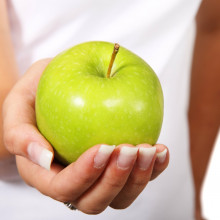
22:56 - How to make a New Year's resolution...and stick to it
How to make a New Year's resolution...and stick to it
with Dr Benjamin Gardner, Kings College London
"Get fitter"...."lose weight"...."learn another language"....Most people approach New Year's resolutions with the idea that it will kickstart a permanent change in our behaviour, going from a slog to an automatic habit - what’s known as reaching a habit peak. But why do we make New Year’s resolutions in the first place and do they really work? Izzie Clarke spoke to psychologist Benjamin Gardner from King’s College London...
Benjamin - There’s a popular myth out there that it takes 21 days to form a new habit. And I’ve looked into the source of this myth and it comes from a book that was written by a plastic surgeon in America in the 1960s in which he found that, among his patients, it took them an average of three weeks to get used to their new appearance. Now, as far as I know, that’s the sole evidence base for this claim that it takes 21 days to form a habit.
Around 10 years ago now, a colleague of mine at University College London conducted a study in which to study the habit formation process in humans. What she found was that 66 days was the average amount of time it took for people to reach their habit peak. Some people reached their peak in 18 days, other people didn't reach their peak at all in the 12 weeks. But, it was forcase that if they kept going, after 254 days they would reach their habit peaks. So there’s great variation between people, between different behaviours in regards to the length of time for things to start to feel like they’re becoming an ingrained part of our everyday routine.
Izzie - I have to ask: is there anything special about the 1st January in terms of changing this behaviour? Why do we even have this New Year’s resolution?
Benjamin - I think it’s helpful in one aspect in that it gives us something specific. We know that we are going to start our behaviour change attempt on 1st January and it’s a general principle of behaviour change that the more specific your plans are with regards to now only what you’re going to do, but in what situation you’re going to do it. The more specific our plans are in that respect, the more likely we are to stick to it.
But I think, on the other hand, I don’t think there’s anything particularly special about the 1st January. It’s useful to have a concrete date mind with regards to when you’re going to start changing your behaviour, but it doesn’t need to be the 1st January. You could equally set your behaviour change start date as say the 1st February or the 1st of March, or any day in the year.
In fact, I think because there is so much pressure to try and think of something you want to change in terms of your behaviour, I think it can backfire. I think people can have a go at changing their behaviour and be unsuccessful because their New Year’s resolutions often were unrealistic or they weren’t properly thought through.
Izzie - How important is having a plan for all of this?
Benjamin - It’s very important to have a plan because it’s well established within psychology that people often intend to make changes to their behaviour but, for whatever reason, they don’t get round to making those changes. One of the best ways that we can put our intentions into action is by forming a concrete plan specifying exactly what we’re going to do in exactly which situation we’re going to do it.
For example, if you want to lose weight, then you shouldn’t just set yourself a goal of losing weight, you need to think about what specific behaviours are you going to try and change in order to lose weight. It may be that you want to, for example, eat fruit snacks instead of eating unhealthy snacks while you’re watching TV. But then you can specify further to say well, what I’m going to do is I’m going to identify particular events where I snack, for example when I’m watching TV, and that’s where I’m going to substitute in the fruit for the unhealthy food that I eat at present. So having a plan is very useful because it helps to specify the details of exactly what we’re going to do. Just having a goal of changing your behaviour, or even just achieving some kind of health outcome is not going to be as useful as having a plan that tells you exactly what you’re going to do and in exactly which situation you’re going to go about doing it.
Izzie - Oh, I see. Because my New Year’s resolution was to get fitter, so you're saying that actually I can’t just be as broad as that, I have to have a real plan of break it down into the different components
Benjamin - Yes. I think if you’re plan is to get fitter then you need to think about which physical activities in particular are you going to do. Then having decided on that, and I’d argue that you should think that through very carefully, because you want to make sure that try doing physical activities that are realistic for you. Then you move to the next stage of saying okay, in which specific situations am I going to do those particular behaviours? So you might say to yourself, for example, I’m going to go to the gym more and when I go to the gym I’m going to use the running machine. In which case the next step is to say when exactly are you going to the gym? Are you going to go on your lunch break? Are you going to go after work? You need to think about exactly when you’re going to put these things into action, and the more specific you can be in that respect the better.
Izzie - I have to ask, do you have a New Year’s resolution for 2018?
Benjamin - I’m afraid I don’t. Perhaps I’m becoming more skeptical over time. I don't have any New Year’s resolutions. I also have two young children and I’ve found that the best formed plans can fall by the wayside when you have young children. So no, this year, I am not resolving to change my behaviour in any way.
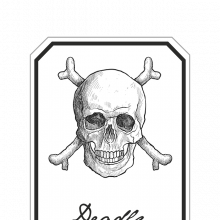
What is a poison?
with Dr Lorna Nisbet, Anglia Ruskin University
What chemical qualities might the perfect poison possess? Katie Haylor got the lowdown from forensic scientist Lorna Nisbet from Anglia Ruskin University...
Lorna - Anything in the world can be a poison and we have known that since about the 16th century. It was the term when that came around. It was the physician called Paracelsus and he is known as the godfather of toxicology because it was him that said that it was literally just about the dose that made something a poison.
"Everything is poison; there’s poison in everything. Only the dose makes a thing not a poison."
Lorna - If something’s a poison, it's going to have to have acute adverse effects on you and potentially kill you and, realistically, that could be anything. It could be water, for instance, that could be a poison at some point in time.
Katie - Now, if we were on the hunt for the perfect poison, and if everything in the world could technically be one, where do we start?
Lorna - Something like water is not going to be the best thing to use as a poison, and the reason for that is you need litres of water before it’s going to start having an adverse effect on the body.
Katie - So dose is important. But what other traits make a poison particularly promising?
Lorna - Realistically, if you are going to be sinister and try and get a poison you want it to be something that you need a small amount of. You need to think how you’re going to administer that poison as well. If you’re going to put it in a drink, for instance, you need it to not taste of anything and you need it to actually dissolve in that fluid if you’re putting it in a fluid. You need it to not smell either or change the colour of the drink. Not that I’m suggesting anyone poisons anybody.
Music: Daniel Birch & Ben Pegley
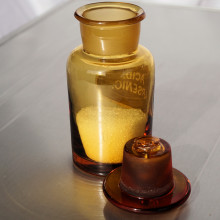
31:42 - A poisonous potted history
A poisonous potted history
with Dr John Emsley, chemist and author
How have poisons been used throughout history? Katie Haylor caught up with chemist and science writer John Emsley, author of Molecules of Murder and More Molecules of Murder, to find out...
Katie - As the old saying goes - “an apple a day keeps the doctor away.” But, eat enough apples in their entirety and you could, in theory, risk cyanide poisoning from all those pips. But now we know the ingredients of a good poison: low fatal quantities, being hard to detect, do we have any good, or should I say bad candidates?
The history books may be a good place to start looking. Chemist and author John Emsley knows his primitive poisons. He explains how the Victorians poison of choice was one readily available in the pharmacy, which meant some rules had to be put in place…
John - To purchase poisons from a pharmacist, you had to sign the poisons register and the pharmacists had to recognise who you were. You couldn’t just walk into any shop and buy it. That was done because there were too many murders mainly with something like arsenic, as it’s oxide was known as white arsenic and this was widely used as vermin poison and things like this. Colouring agents could be made from it so it was available. Because it was available it was being used to dispose of unwanted relatives and things like that.
Katie - Okay. Are there any particularly famous cases of this?
John - There’s some very famous cases in history. But going back even earlier to the 17th century the Marquise de Brinvilliers in France murdered her relatives to secure the family income. She was only detected because the man who was supplying it, her lover, suddenly died and they discovered her letters. The thing about that was this was one of the first cases in which someone was asked to prove that the powder they detected was the deadly poison. That was in 1676, and a pharmacist in Paris devised a set of test to prove that what they’d found was actually arsenic and it worked, and she was found guilty and executed.
Katie - What is it fundamentally about arsenic that makes it such an effective poison?
John - The think is it’s in the same group of the periodic table as phosphorus. Phosphates, of course, are essential in lots of parts of the human body from DNA upwards and, of course, if you put arsenic there the body can recognise arsenic and thinks it’s getting phosphates. It will introduce arsenic at all sorts of points and then, of course, these things won’t behave as they should behave and very quickly you’re made very ill. The body recognises arsenic as something it doesn’t want very quickly but not before it’s absorbed quite a lot of it. Then, of course, it screws up various parts of your body and, with a big enough dose, you die within a day or so.
It will attach itself to something called ATP (Adenosine Triphosphate) and, if does that, then it really interferes because ATP is needed in every cell of the body. Then things begin to break down because you need ATP to generate energy in your heart, for example. If you can’t generate enough energy then you’re going to be in real trouble.
Katie - The chemical element arsenic’s availability and toxicity made it the perfect poison of the day, but it could be detected. So could a poisoner try to mask their ill intentions by using a substance that is already found naturally in the body?
John - Adrenaline is one that has been used in murders. The chemical name for it is epinephrine, and this the body produces and it produces a lot of this if you’re under sudden stress.
Katie - This the ‘fight and flight’ response, isn’t it?
John - Yes. If you’re having a heart attack they may give you this to stimulate the heart and keep it going. It’s not something you would normally think of as being a poison but it has been used by nurses. Nurses, of course, have access to it and those are the ones who generally murder with adrenaline because they know if you give too much adrenaline it’s going to over-stimulate the heart and the heart will pack up.
The serial killer nurse called Kristen Gilbert probably killed about 50 of her patients with adrenaline. She worked at the Veterans Hospital in Northampton, Massachusetts and she did it for a variety of reasons. If the person began to annoy her, then she would give them an overdose. Often these people were very ill and so it was just put down to the person had died of natural causes. But, eventually, she got rather careless in that if it was someone in intensive care, and she wanted to go out with her boyfriend and the person in intensive care couldn’t be left, she would give them an overdose of adrenaline and pass them onto the next world. It’s not known exactly how many people she dealt with, but it was probably around 50 before she was finally caught.
The thing about that was it became so common this occurrence of people she was supposed to be looking after suddenly dying that they began to investigate. Other nurses said there’s something odd about this - I think they called her The Angel of Death, or something like that. They began then to analyse the body and, of course, were able to detect there was far more adrenaline in the body of the dead person than the body itself could actually have produced. They were able to go back and analyse samples from bodies that had been dead two or three years and there was still excess adrenaline.
Katie - Despite being a chemical that pre-exists in the body even adrenaline can’t stay hidden for long when given in lethal doses. So how about something so deadly, something which is needed in such a small quantity to cause harm, but it’s virtually undetectable?
John - The thing about polonium chloride is that it’s radioactive but it gives off only alpha particles. Alpha particles are relatively harmless; a sheet of paper will stop an alpha particle. It doesn’t give off gamma rays. Gamma rays are the things that you can use a geiger counter to detect. With polonium it was possible, the Russian Secret Police found, to pass through the parts of airports where you go through a thing and it will detect if there’s anything radioactive on you. They could pass through that so they were using this to dispose of people. The amount of polonium you need to kill someone is so tiny it’s difficult to see - it’s as small as a mote of dust. It is that deadly.
Katie - Polonium is radioactive. Once inside the body the alpha particles emitted by polonium can make their way into cells, damage DNA, and cause cell death.
John - We know our cells have got a wonderful repair mechanism that’s being used all the time because cells are needing repair. Of course, it can be repaired but not when you’re giving off something like a 100 million of these particles a second, then there’s not way the body is going to be able to cope with that.
The most famous poisoning of this was someone called Alexander Litvinenko and he came to Britain. He was a KGB agent and after the end of the Soviet Union a lot of people from Russia could then come and live in Britain. He came to Britain and he was granted asylum because he said he was ex KGB and he was able to tell the British secret people a lot about it, so we took him in and he was given another name. He was called Edwin Redwalt Carter, and he was given a house with him and his family in Muswell Hill in London and he began to lead quite an anonymous life.
The trouble was, when he was visited by his wife’s mother, she went back to Russia and the police there knew who she was. They searched her luggage and they found out details of who he was and where he lived, so they then sent another agent to London to dispose of him and that agent came with polonium chloride. He was an old “friend” of Litvinenko and he invited Litvinenko to the Millenium hotel where he was staying London, and there he had green tea with polonium chloride in it.
Of course, the following day he began to feel ill. The doctor diagnosed gastroenteritis, the usual reaction to something you’d eaten. Put him in hospital; he got no better; sent down to University College Hospital because he obviously was seriously ill. His hair began to fall out, which is sometime a sign of thallium poisoning, and thallium’s a deadly metal. But they detested for thallium and no it wasn’t thallium and so they knew his hair was falling out because of radiation damage. The chemists, the scientists, detected polonium and, suddenly, it was obvious what was killing Alexander Litvinenko, and he died after about three weeks in hospital.
Katie - Death by radiation. No taste, no smell, and given in miniscule quantities. It’s polonium’s volatility that led to its detection. Once identified, scientists were able to detect the traces it left behind on various surfaces, even including the seat in Arsenal Football Stadium where the killer had sat to watch a match.
John - We are only talking now of a few atoms and yet, there it is and there it can be detected. Even that supposedly undetectable poison that the Russians were using is now no longer in that category of undetectable.
Music: Daniel Birch & Ben Pegley
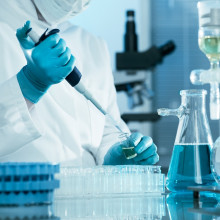
40:26 - How do you identify a poison?
How do you identify a poison?
with Dr Lorna Nisbet, Anglia Ruskin University
In this programme so far, we've looked at historical poisoning cases. But how are poisons detected today? Lorna Nisbet is one of the many forensic scientists who identifies poisons, sometimes in deadly cases. Katie Haylor met Lorna at her lab in Anglia Ruskin University, to find out more...
Lorna - This machine here is a gas chromatography-mass spectrometer, and it’s actually two instruments that have been coupled together. You have the gas chromatography (GC) side and then you’ve got the mass spectrometer side. Your sample, your poison, will go into the vial and the instrument will take it in a syringe and it will inject it into the GC. At that point it will become a gas and that will separate out all the different components that would be in that sample. Because, unfortunately, when people do pass away or they have got an acute reaction to a drug or another poison, they might not have just taken one. So we need to separate out all those different components to see what is in that sample.
Katie - Are we putting blood or some sort of bodily fluid in here?
Lorna - You don’t put the bodily fluid in (directly), you do some cleanup beforehand but it would be like that. Then it will travel through the GC, and the GC is made up of a column that’s that’s 30 metres long.
Katie - It doesn’t look like it’s 30 metres long.
Lorna - And it is extremely thin and all coiled round and round and round, so it’s quite compact. Then it will travel through to the mass spectrometer and here it gets bombarded by electrons so it goes past something that looks like a filament in a lamp effectively. It goes into what’s called the mass spectrometry source and, from that point, because it’s getting bombarded by these electrons it causes your compound to fragment. The idea is that every compound has a different fragmentation pattern so it’s like a fingerprint.
Katie - So if you know the fingerprint you can tell what it is?
Lorna - Yes, exactly. If you have something, once you’ve identified what it is, you can put down something that you think is the same and if it’s got the same fingerprint you can confirm that that’s what it is.
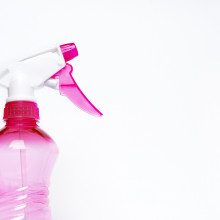
42:44 - Poisons in the home
Poisons in the home
with Professor Robert Chilcott, University of Hertfordshire
Poisons may be most associated with gruesome murders, but the vast majority of poison related deaths are accidental. According to the NHS website, most poisonings in the UK occur in the home. So are there compounds lurking our cupboards that we should be aware of? Katie Haylor spoke to Professor Robert Chilcott from the University of Hertfordshire...
Robert - If we stick to the consumer products, one of the more interesting ones in botulinum toxin. Sometimes, if food has not been processed properly, things which are stored and boiled in jars in tins can actually grow certain types of bacteria which produce botulinum toxin - botox.
Katie - That’s right, you heard correctly: botox is the same stuff that some people have injected into their faces to relax facial muscles in order to reduce the appearance of lines and wrinkles - it’s the same toxin.
Robert - It only counts for a very small fraction of percent of all reported food cases, but it’s really the one you don’t wish to have. It nearly always requires hospitalisation and about one in ten people who get botulinum toxin will actually die.
The medical form, of course, is very pure and it’s a specific form of botulinum toxin. In the wild there’s about seven types of botulinum toxin but they all have the desired effect; they’re incredibly toxic. I think botulinum toxin is the most toxic substance that we’re aware of.
Katie - So bacteria produce this toxin, and this bacteria could be around in the food that goes into the can, so what happens then? How, if you’re unlucky enough to eat this food, what happens to your body?
Robert - The bacteria that produce the toxin are pretty much ubiquitous. It grows nearly everywhere, so almost certainly, it will be in the food that you try and preserve. The problem comes when you don’t follow the right instructions. For example, if it’s not boiled properly or you keep it in a solution which is not sufficiently acidic, then you run the risk of the bacteria starting to produce the toxin, which is primarily under what’s called anaerobic conditions, so anything that doesn't’ have too much oxygen in will be a nice breeding ground for botulinum.
As I said, it’s an incredibly toxic material. The estimated lethal dose is about 70 nanograms. A nanogram is about a thousand millionth of a gram, so it’s very difficult to put that weight, or lack of weight, into perspective. But, as a rough guide, if you think about a single hair, that would be about 9,000 times heavier than a lethal dose of botulinum toxin.
Katie - Is this something that we should worry about as consumers of tinned foods, or does the problem come when you’re making your own tinned food?
Robert - I think the mass market, the processing now is to a point where we don’t need to worry about this at all. Of course, if we’d lived about 100 years ago when tinned food was just coming into fashion, that probably was more a game of Russian roulette. The most common forms of botulinum toxin these days is people who preserve the food at home: pickles and so forth and things which goes into jars. Fruit, in particular, because sometimes it lacks the acidity that you need to prevent the botulinum from growing. But, in general, it’s actually, as I’ve said, a very rare form of food poisoning.
Katie - Why is it so poisonous? What does this toxin do when it gets into the body?
Robert - To put it simply, the botulinum toxin works by turning off our nerves. As you probably know, nerves normally activate muscles using substances called neurotransmitters. These are chemicals that are released from the nerve endings and result in the coordinated movement of muscles, so when we speak or walk or breath, this is all down to the nervous control of our muscles.
Basically, the toxin acts by cutting off the ability of the nerve endings to produce the neurotransmitter. Essentially, that stops the muscle from being told to contract and, eventually, it just causes paralysis. What’s particularly nasty about botulinum toxin is that you get these paralysis effects and, eventually, you are unable to breath, but the whole time you're actually conscious and aware of what’s going on.
There is an antidote; it’s based on antibodies that actually bind to the different types of the toxins. There are seven different toxins in botulinum toxin. If you manage to get to a hospital and diagnosed then that antidote may be available. Otherwise, the only treatment really is supportive - you may need to have mechanical ventilation. But botulinum poisoning can last quite a long time so you may still suffer different degrees of paralysis for many months after you’ve initially been poisoned.
Katie - Wow. So if you’re thinking about making your own tinned foods you do need to be exceptionally careful. What about non-consumer products then; what about, for example, cleaning products can they be poisonous?
Robert - Oh, there’s a whole wealth of poisons in cleaning products. The obvious example may be chlorine. Most people have heard of chlorine, but it’s a bit of two-edged sword when it comes to our society. On the one hand you have your chlorine-containing consumer products that keep our world nice and clean and fresh and free from major diseases. But, of course, if you mix the wrong type of cleaning products together you can quickly produce lethal quantities of chlorine. It’s not uncommon: I think in the UK each year there’s about half a dozen major incidents involving public exposure to chlorine. There are probably a small number of incidents involving single people, people have mixed these chemicals in their toilet.
But chlorine is actually quite toxic. It’s a very highly reactive molecule and it likes to seek our moist areas, so when you breath it in the nice wet lining of your lung tends to absorb the chlorine. There’s no specific mechanism of action, it’s just nasty corrosive stuff. In a sufficient dose, you get the chlorine inside and it’ll basically just rot the lining of your lungs. That then causes a condition called pulmonary edema so, basically, all the fluid that’s inside our body starts to leak into the lungs and it stops us from breathing.
Katie - What kind of toxic combination are we talking about?
Robert - The rough rule of them is: don’t mix cleaning products. But the particular cocktail which has the worst effect is mixing a bleach solution with anything which is acidic or contains ammonia.
Katie - Household bleach contains sodium hypochlorite, a chlorine compound. It’s a common cleaning product often used as a disinfectant to clean toilets, swimming pools, and even to treat public water supplies. But, when mixed with other cleaning products, toxic gases can be released. For instance, chlorine gas in the case of mixing with acidic substances, or chloramine gas in the case of mixing with alkaline products like ammonia.
Robert - The initial signs of poisoning are relatively low concentrations, it’ll cause mild irritation of the eyes and the lungs. So, basically, it’ll be like going to a swimming pool for maybe an hour or so. You get a bit of red eye, maybe a little tickly cough. But when you start to get exposed to a higher concentrations it can get quite painful to breathe and breathing becomes much more difficult. When you go to a very high level - we’re talking about 300 parts per million or so - you can actually die within 30 minutes of exposure.
People often talk about antidotes to poisons but, I think, there’s only maybe about a dozen antidotes in the whole world for very specific chemicals. Unfortunately, chlorine is not one of them. So, basically, if someone gets exposed to chlorine and has these severe effects the only way to treat them is supportive. You give them some oxygen, you may want to give them some drugs to open up the airways, which are known as bronchodilators, possibly steroid to try and reduce the inflammation. And, if they’re lucky, it can take maybe three, four, five weeks to recover from a significant exposure to chlorine.
Music: Daniel Birch & Ben Pegley
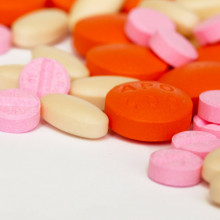
51:18 - Is there a perfect poison?
Is there a perfect poison?
with Dr Lorna Nisbet, Anglia Ruskin University, Dr John Emsley, chemist and author
The poisons we’ve discussed so far are, thankfully, all detectable, and there are things we can do to reduce the risk of accidental poisoning. So where does this all leave our search for the perfect poison? Katie Haylor asked John Emsley...
John - I don’t think there is one now. Because of high performance liquid chromatography, which can separate every component of a mixture, along with mass spectrometry, which can identify anythings that's present, there’s no way once you suspect somebody’s died of poison, even a tiny strand of their hair analysed by this technique will reveal what it is. That’s assuming that a little of the poison has gone into the hair which often it does.
There’s no such thing any more as the perfect poison. Even something like adrenaline, which looked to be a perfect poison for this awful women in America. She had to use so much of it she needed to do that in order to wreck the heart as it were and, of course, once that person’s died there’s a residue of this at a higher level than nature can provide. So I just don’t think there is such a thing now as a perfect poison.
Katie - Good news! Reassuringly, John thinks there’s very little chance of a poison being able to escape our modern detection methods once a poisoning case is suspected. But, it’s one thing to have the benefit of history and hindsight looking at compounds we know and understand. What about new compounds? According to The Office for National Statistics deaths from new psychoactive substances are on the rise. Here’s Lorna again...
Lorna - If I’m going to stand up in court and put to a pathologist “this my toxicology report, this is what I have found”, I have to be confident that I have found what I’m saying I’ve found. In order to do that I have to have a reference standard or I have to have a copy of what is called its mass spectra in a library. You can’t compare an unknown and magically know what it is. You’re comparing your unknown with a known. If I do not have a reference standard or a spectra of some sort to compare, I cannot go into court and argue that that is definitely what it is.
Katie - Compound to compound, you cannot guarantee that is the same?
Lorna - No. You would have to able to compare a known, and an unknown so that you can say that this is what this definitely is and you have to be able to prove the evidence for that. If these reference standards and if these spectra have not been done for that compound yet, so for instance, some of the psychoactive substances, we’re struggling to keep up with them. About two a week come into Europe right now so, realistically, we have more new psychoactive substances around than we do have of the classical drugs, so that can become a bit ‘needle in a haystack.’
Katie - In terms of poisons, I’m assuming people don’t take psychoactive drugs because they want to poison themselves, they take them for their intended effects. Can a psychoactive substance be a poison?
Lorna - Yes, it can. But it depends on the side effects of that psychoactive substance. The toxicity is what you’re looking for, normally with really classic drugs we would do LD50, these are what it takes to kill 50% of a population. Some of these drugs have a very high LD50s or they’re just unknown completely. LSD, for instance, most of the deaths from LSD come because, unfortunately, someone has fallen from a building. It’s through a mechanical death rather than the actual drug. But the newer versions of them, which are called n-bombs are much, much more potent and you don’t need the same amount. The onset of them is slightly slower so people tend to redose and, unfortunately, that’s how they die.
Related Content
- Previous Zero-G
- Next The Science of 2017










Comments
Add a comment